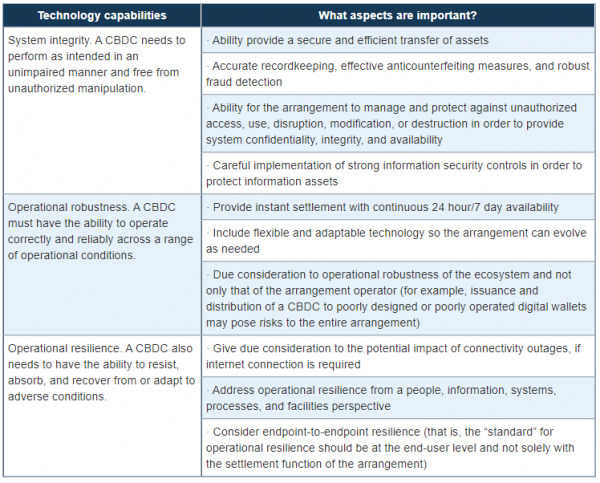Technology and infrastructure firms play a significant role in today’s market, and support from these groups is a precondition of a CBDC issuance. A potential CBDC may take many different forms, some of which could be achieved through existing technology and infrastructures. Or it could use newer technologies, such as distributed ledgers, that are not widely used today. Or it could use a combination of existing and new technologies. CBDC arrangements may also allow or accelerate the entry of new providers, such as bigtech and fintech, into payment or other financial services. Incumbent firms that are unable or unwilling to embrace or develop new capabilities may experience negative impacts as new entrants emerge. Understanding these dynamics will inform design choices and help address questions of CBDC design, interoperability, market structure, and market adoption.
Technology will, in part, influence the design and functionality of a digital currency. In some cases, business and operational requirements for a particular CBDC design may require the development of new technologies. A nationwide CBDC arrangement based on distributed ledger technologies, for example, would require further advances, such as increased transaction throughput capabilities given the size of the US economy. Further, access or integration points, such as digital wallets, may require additional development to meet operational standards. A CBDC that can operate offline, for example, may require use of other technologies such as secure hardware. Significant technology development and assessment work are needed in three core areas: system integrity, operational robustness, and operational resilience.


